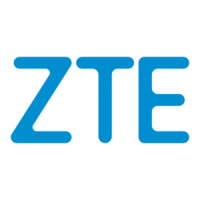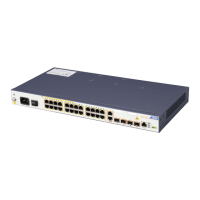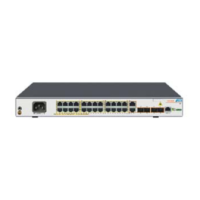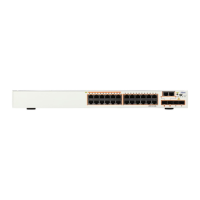ZXR10 2920/2928/2952
(V1.0) Access Switch User Manual (Volume I)
160 Confidential and Proprietary Information of ZTE CORPORATION
Controlled port and uncontrolled port in the IEEE 802. 1x
protocol are logical ports. There are no such physical ports on
equipment. IEEE 802. 1x protocol sets up a local
authentication for each subscriber that other subscribers cannot
use. Thus, there will not be such a problem that the port is
used by other subscribers after port is enabled.
Authentication server is generally a RADIUS server. This
server can store a lot of subscriber information, such as VLAN
that the subscriber belongs to, CAR parameters, priority,
subscriber access control list, and so on. After authentication
of a subscriber is passed, authentication server will pass
information of this subscriber to authentication system, which
will create a dynamic access control list. Subsequent flow of
subscriber will be monitored by above parameters.
Authentication system communicates with RADIUS server
through RADIUS protocol.
RADIUS is a protocol standard used for the authentication,
authorization, and exchange of configuration data between the
Radius server and Radius client.
RADIUS adopts Client/Server mode. Client runs on NAS. It is
responsible for sending subscriber information to specified
Radius server and carrying out operations according to the result
returned by the server.
Radius Authentication Server is responsible for receiving
subscriber connection request, verifying the subscriber identity,
and returning the configuration information required by the
customer. A Radius Authentication Server can serve as a
RADIUS customer proxy to connect to another Radius
Authentication Server.
Radius Accounting Server is responsible for receiving the
subscriber billing start request and subscriber billing stop
request, and completing the billing function.
NAS communicates with Radius Server through RADIUS packets.
Attributes in RADIUS packets are used to transfer detailed
authentication, authorization, and billing information.
Attributes used by this switch are primarily standard attributes
defined in rfc2865, rfc2866, and rfc2869.
EAP protocol is used between switch and subscriber. Three
types of identity authentication methods are provided between
the RADIUS servers: PAP, CHAP, and EAP. Any of the
methods can be used according to different service operation
requirements.
PAP is a simple plain text authentication mode. NAS requires
subscriber to provide username and password and subscriber
returns subscriber information in the form of plain text. Server
checks whether this subscriber is available and whether
password is correct according to subscriber configuration and
returns different responses. This authentication mode features
poor security and username and password transferred may be
easily stolen.
Authentication
Server
Client/Server
Mode
Radius
Accounting
Server
Password
Authentication
Protocol (PAP)
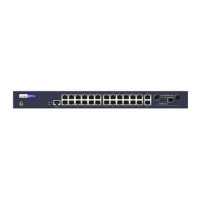
